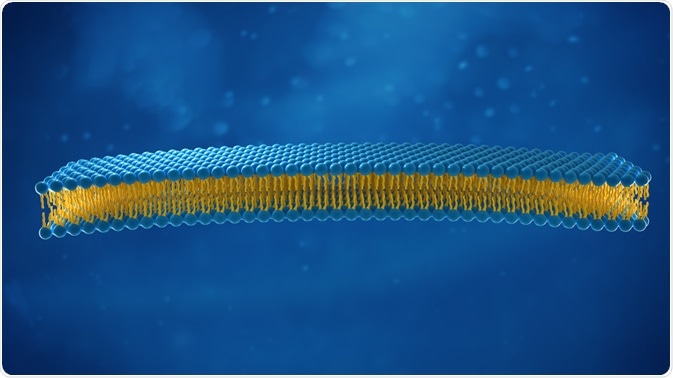Modern cells evolved from protocells. Despite having highly similar characteristics to living cells, these precursory cell-like structures are non-living. Recent research has focused on the production of synthetic protocells to explore their biological applications.
 Image Credit: Tomasz Swierczynski / Shutterstock.com
Image Credit: Tomasz Swierczynski / Shutterstock.com
A model of evolution
The first life forms on Earth appeared approximately 3.5 billion years ago. It is thought that modern cells evolved from much simpler protocells. However, there are still gaps in our knowledge about the origins of life on Earth. Thus, the study of protocells is an area of interest for evolutionary biologists.
Production of protocells
There are two complementary approaches used to produce protocells that enable the study of different aspects of the origin of life and modification of cells.
Using molecular constituents as tools to build protocells, the bottom-up approach closely resembles the way in which life must have been created on Earth – from abiotic sources. The top-down approach differs from the bottom-up approach as it strips cells of specific genes in order to create modified ‘minimal’ cells.
Targeted drug delivery
14.1 million new cases of cancer were diagnosed globally in 2012. It is generally recognized that chemotherapy is accompanied by side effects that affect the patients’ life quality. It would be a huge benefit if the drug could be delivered specifically, reducing the side effects.
The use of nanovesicles in targeted drug delivery is an area of great interest and potential. Due to their specificity, lack of interaction with undesired sites, and size, nanovesicles could change the landscape of cancer therapy. Protocells can deliver a class of drugs used in the treatment of leukemia, lymphoma, and some solid tumors.
Artificial phagocytosis
A research group at the University of Bristol have recently been able to achieve artificial phagocytosis using protocells.
Two forms of protocell were used in their research: colloidosomes (microcapsules composed of colloidal or coagulated particles that have been implicated in drug delivery due to their permeability, compatibility, and mechanical strength) and magnetic emulsion droplets (with non-crosslinked iron oxide outer shell.)
The protocells were introduced in oil; however, phagocytosis only occurred when fatty acids were also added. The larger magnetic emulsion droplets were observed to phagocytose colloidosomes.
Protocells and viruses
Transmitted by bats and globally distributed, henipaviruses cause various fatal illnesses in humans. Protocells with receptors for the entry of henipaviruses have been shown to disarm these viruses by deactivating Ephrin-B2 protein which enables viral entry into the cell.
Protocells and biofuels
The growing scarcity and environmental impact of traditional hydrocarbon fuels is of global concern. Biofuels provide a viable alternative; however, their use is limited due to low production capacity and incompatibility with modern engines. Using a top-down approach, yeast and bacterial cells have been modified to produce replicas of industrially relevant alkanes and alkenes.
Linking the future to the past
Though protocells are commonly associated with the study of the origin of life, they have uses across the fields of biotechnology, medicine, and environmental sciences. Advancements within these fields will only further highlight the vast applications.
Further Reading
Last Updated: Feb 1, 2021